Advertised as “America’s Largest and Finest Colored Playhouse”, the Lyric Theatre opened its doors on February 24, 1919 at the corner of Iberville and Burgundy Streets in the French Quarters. The structure itself had been built around 1895 by Henry Wenger and was formerly known as Wenger’s Variety Hall and Wenger’s Beer Garden.
Luke Boudreaux and Clarence Bennett were the owners and together they brought in nationally known black entertainers to perform for black audiences. They saw to it that the Lyric became affiliated with the Theater Owners Booking Association which was a nationally known group that worked with the best talent from across the country. As a result, the Lyric was able to bring in shows that included a wide variety of acts, such as jazz and classical music, dancing, contortionists, juggling and magic. It became known as the premiere platform for black vaudeville in the city. Some of the biggest stars in the country performed there, including Ma Rainey, Mamie Smith, Josephine Baker, Ethel Waters, Jack Wiggins and Florence Mills.
With its two thousand seat capacity, the new theatre soon grew in popularity across the city. Except for its white owners, Luke Boudreaux and Clarence Bennett, everyone involved in its day-to-day operation were people of color: ticket sellers, colored managers, doormen, and girl ushers.
The orchestra was under the direction of Professor John P.Robichaux (violinist) and five of the best musicians: Margaret Maurice (piano/ music teacher), Alphonse Picou (clarinet), John Lindsey (trombone), Arthur Singleton (drummer), and Andrew Kimble (cornetist). Professor John P. Robichaux remained at the Lyric Theatre until 1926.
The Midnight Follies
As the popularity of the Lyric Theatre continued to spread, many in the white community expressed interest in the talented group of black actors and actresses performing on stage. Of course, they demanded complete racial segregation, but could not resist the allure of race entertainment. As a result, the owners decided to present performances at the Lyric “for whites only” at a time completely set apart from the ones scheduled “for colored only”. These events became known as Lyric’s Midnight Follies.
The Midnight Follies were comprised of white tourists to the city, society folks, and theatrical performers from other shows. Printed invitations were needed for admission and could only be secured at newspaper offices or any of the leading hotels. Since shows had to be held after the colored shows closed, doors did not open until 11p.m. and the curtains rose at 11:15 p.m. every Friday night.
White patrons received a full course of “authentic” up-to-date black variety entertainers from blues shouters and blackface comedians to opera singers, harmonica and banjo kings, male and female impersonators, “bronze beauty” choruses, vocal quartets, jazz bands, yodelers, jugglers, wire walkers hoop rollers, one-legged dancers and more. By the end of 1925, the Midnight Follies were a solid institution in New Orleans.
Ida Cox and Charles Anderson
Ida Cox, noted blues singer, and Charles Anderson, yodeler, proved to be an extremely popular two-some when they opened the Lyric’s annual season on Labor Day of 1926. They played to four shows that were filled to capacity. Mr. Boudreaux stated that he intended to keep the shows up to high standards and that no cheap shows would be accepted.
In April of 1926, an incident occured when a troupe of actors from the Lyric Theatre went to entertain at the Parish Prison for the benefit of the prisoners. They were refused transportation by the taxi driver. Mr. Boudreaux used his own car, making several trips, and even walked over to the prison in order to allow the whole troupe to ride. “This is an outrage,” he said. “I see no reason why such rank discrimination should be shown. No one else was in the taxi and it is a common carrier.”
The Lyric Theater’s Midnight Follies of November 25, 1927 was the last one chronicled in the local newspaper. It appears the theater closed its doors suddenly and without warning, to both blacks and whites, soon after this date. The rumor around town was that the building was destroyed by a fire which was set on purpose in order to collect insurance. After extensive research through the 1927 Louisiana Weekly newspapers, I have found no evidence to back up this theory. Lynn Abbott of the Hogan Jazz Archives discovered an article in the December 10, 1927 issue of the Chicago Tribune which states the theatre had been losing money for the past two years so its doors were closed due to poor business.
In February 1928, the Lyric was torn down and turned into a parking lot. Decades later, the theater would serve as the inspiration for “One Mo’ Time,” a musical written by New Orleans native Vernel Bagneris that toured the world in the late 1970s and early 1980s.
Sources: [Articles] “For Ofays Only” An Annotated Calendar of Midnight Frolics at the Lyric Theater (Part 1+2), The Jazz Archivist (Vol. XV11+ XV1112003-2004) Hogan Jazz Archives, Tulane University; The Times Picayune- 09 June 2013, p.A-15 James Karst. [Photos] The Louisiana Weekly 16 April 1927 p.4, 04 September 1926 p.4; The Times Picayune 09 June 2013 p.A-15;
A special thanks to Lynn Abbott of the Hogan Jazz Archives at Tulane University for all of his assistance.
Lolita V. Cherrie
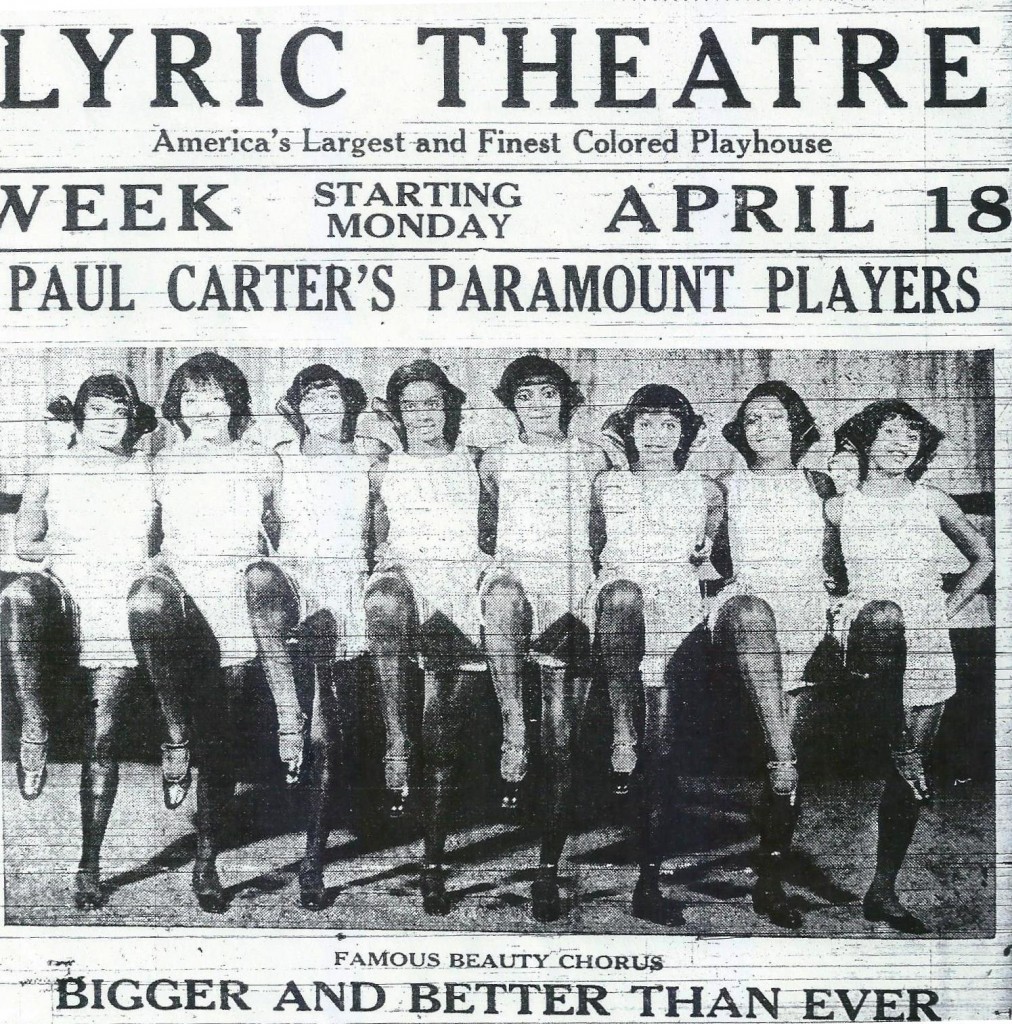
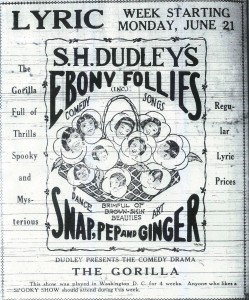
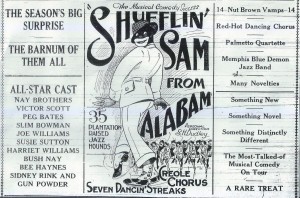
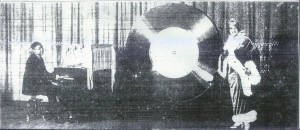
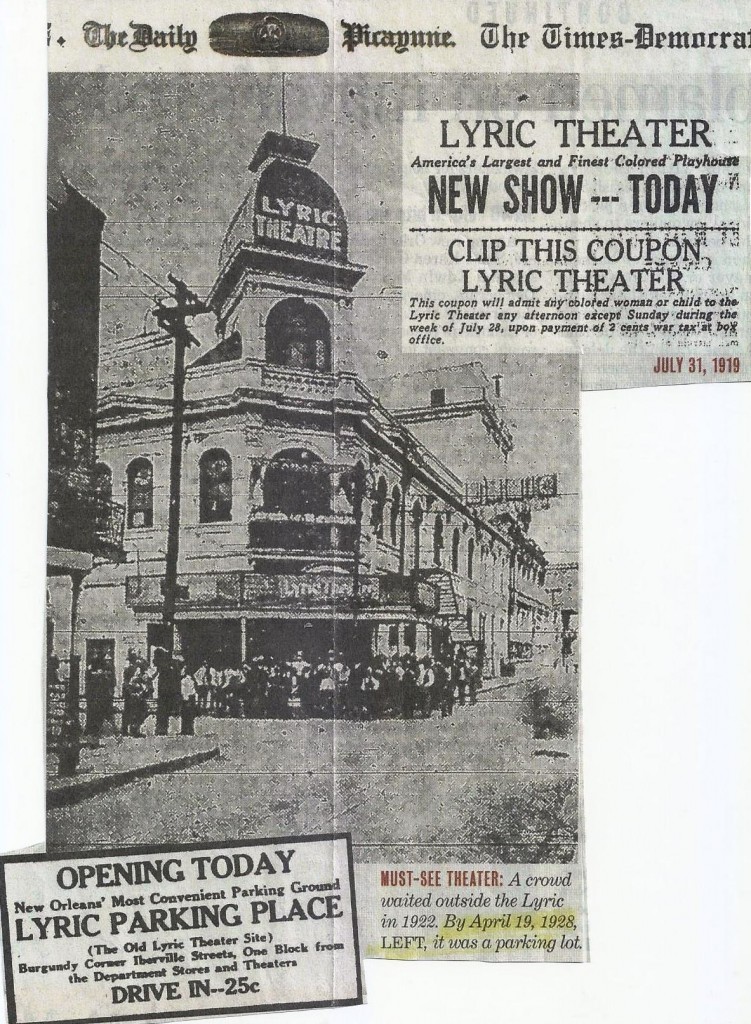



Great and thanks. I have shared this in my New Orleans group on Facebook.
There was a movie theater called The Palace in the same area. Could this movie theater have replaced The Lyric?
Hi Castro,
I did a little research since I didn’t know the specifics about the Palace. The Greenwall Theater which opened in 1903 was renamed the Palace Theater by the 1920s. It was located on Dauphine at Iberville and was for the” colored” population. It could seat 1,014 and was remodeled in the 1940s but closed in the early 60s and was demolished. I remembered the name but nothing else. So it appears it didn’t replace the Lyric which was on the corner of Iberville and Burgundy, but both were in very close proximity and both provided entertainment for people of color during segregation. Thanks for asking. Lolita
This is just amazing. At least it is for me. I live in Alabama but I love visiting New Orleans. I’m going there this weekend and I’m staying at the Courtyard on Iberville , THE VERY SAME BLOCK that this great historical theater use to sit. I will take a picture of it and add what it use to look like next to it.
I find this all fascinating. The history is so awesomely rich in the FQ. Thanks to the ones who do all the research.
Hello
I have come across a framed poster of LYRIC One Mo’ Time /1979. Does anyone have any information on this poster? It’s lovely.